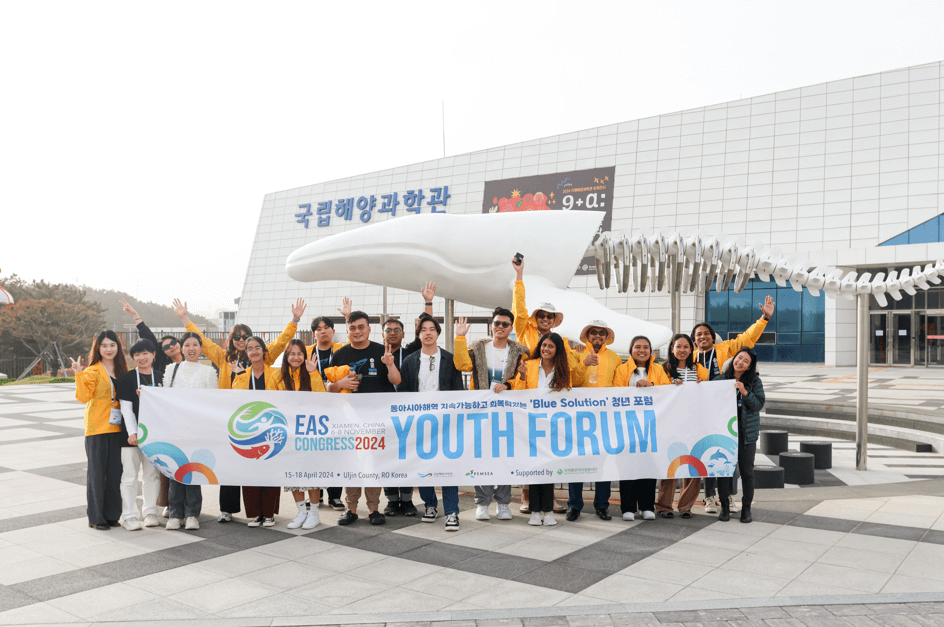SDGs and Building a Blue Economy in the Seas of East Asia
Tuesday, 5 April 2016

By Stephen Adrian Ross
PEMSEA Executive Director and Chief Technical Officer
East Asia’s oceans are home to some of the richest and most diverse ecosystems in the world. The region’s coastal and marine resources are crucial for food security, livelihoods, employment, trade and social and cultural well-being. Yet they are threatened by pollution, coastal habitat modification, excessive and destructive development and management and climate change. Marine resources in some parts of the region have been fished down to 5 to 30 percent of their levels in the 1950’s. Of significance is the fact that livelihoods and economies of the region are inextricably linked to such resources. For example, of the estimated 3.2 million fishing vessels operating in marine waters worldwide, an estimated 1.77 million (55 percent) are in the South China Sea, of which the majority (86 percent) are small scale. Employment in the marine fisheries sector in this sub regional sea area is around 3.7 million people, but this is likely an underestimate as small scale fisheries in many East Asian countries are often overlooked in national statistics. For these people, and millions elsewhere in coastal communities across the region, fishing is not an option but a key component in food security, household income and survival.
The Sustainable Development Goals (SDGs) adopted by the United Nations in September 2015 drive home the point that we cannot continue to take the benefits of the oceans for granted in our narrow pursuit of progress. The critical role of oceans in sustainable development has been specifically recognized through a dedicated goal (Goal 14), which calls for the conservation and sustainable use of oceans, seas and marine resources and provides a comprehensive framework for moving towards sustainable development of oceans.
The response from PEMSEA Country Partners has been positive and direct. In November 2015, 10 governments from the East Asian region signed the Da Nang Compact, adopting the Sustainable Development Strategy for the Seas of East Asian (SDS-SEA) 2015 along with medium-term targets as milestones for measuring progress. The SDS-SEA 2015 tackles four challenges to sustainable development and blue economy growth in the the Seas of East Asia – pollution from land-based sources, climate change, over-exploitation of resources and habitat loss. The SDS-SEA 2015 provides a common platform for regional cooperation among countries and different stakeholder groups, along with a management framework for policy and programme development and implementation at national and local levels on a voluntary basis.
The seven strategies of the SDS-SEA 2015 directly support the achievement of four SDGs - Goal 14 (blue oceans), Goal 6 (water and sanitation), Goal 11 (sustainable cities) and Goal 17 (partnership development), through replication and scaling up of good practices in integrated management of coastal and marine resources. Meanwhile, the SDS-SEA 2015 indirectly contributes to the achievement of 9 other SDGs related to poverty reduction, reduction of hunger, gender equality, reduction of inequality, terrestrial biodiversity conservation, etc. by focusing on measures to improve governance and promote partnerships across political, social and economic boundaries.
Over the next 5 years, SDS-SEA implementation among PEMSEA Partners will focus on 4 key issues: 1) collaborative regional and national policy, legislation, enforcement and supporting institutional arrangements; 2) scaling up integrated coastal management programmes to cover 25 percent of the region’s coastline to tackle the major challenges to blue economy development including climate change, natural and manmade disasters, overfishing, habitat degradation and destruction, pollution and water and food security; 3) building and strengthening capacity through support networks and partnerships; and 4) monitoring and evaluation of benefits, impacts and gaps through state of coasts and ocean reporting at local, national and regional levels.
PEMSEA’s objectives over the next 5 years are ambitious. However, the experience of the past 22 years in building a regional partnership mechanism and piloting and scaling up ICM programme coverage, now at 14 percent of the entire region’s coastline, provides governments and stakeholders across the region with confidence in their ability to deliver. Through its work, PEMSEA has learned that positive change can happen, and when it does, people benefit. There are many examples at the more than 40 local government sites across the region where ICM is being implemented. However, we also know that PEMSEA’s work alone isn’t enough. No one organization, government or investor can do what is needed to turn around ocean health on their own. That is why we continue to promote partnerships as a key aspect of our mission. When governments, the international community, civil society, academe, business and coastal communities come together to address actual problems on the ground, the opportunities and benefits that emerge make a real difference in people’s lives.
PEMSEA and the SDS-SEA 2015 provide the opportunity to galvanize the East Asian region’s dynamism and commitment to blue economy growth and to build and strengthen partnerships that support the SDGs, and particularly SDG 14 on oceans, in order to turn the tide on declining ocean health in the region and globally. We invite your input and collaboration.



